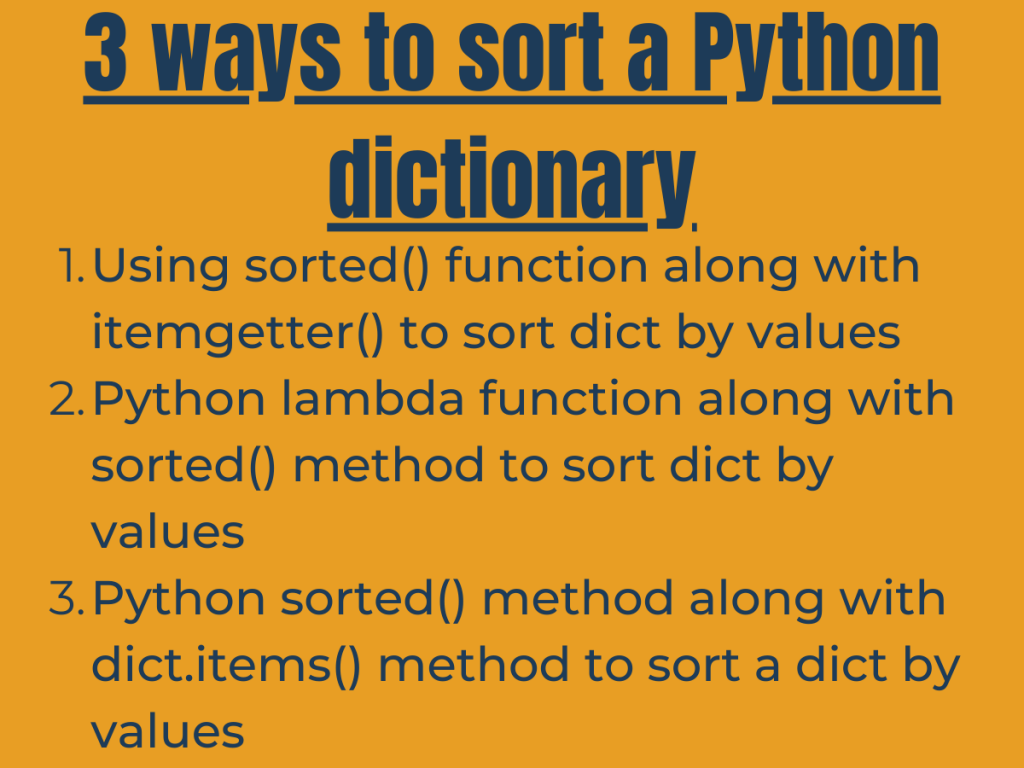


In Python 3.6 and earlier, dictionaries are unordered. As of Python version 3.7, dictionaries are ordered. A dictionary is a collection which is ordered, changeable and do not allow duplicates. In this post we saw 3 different ways of sorting a dictionary in descending order with Python. Dictionaries are used to store data values in key:value pairs. You want to sort the values, in this case the grades, in a descending manner - the highest grade will appear first and the lowest last.įor example, you have this: grades = Īnd Voila! You have your grades dictionary sorted by value in a descending way.

Say that you have the following dictionary containing your grades associated with a subject. Using sorted () + items () +reverse () functions to sort dictionary by value in reverse order. Using sorted () and items () functions to sort dictionary by value. We can sort this dictitems object the same way we sorted the list of tuples seen earlier. We can use sorted() to sort the dictionary keys and values individually and later zip will. Sorting the dictionary keys in reverse order. Method-5: Python sort dictionary by key using sorted() with zip(). Dictionaries themselves do not have ordered items as such, should you want to print them etc to some order, here are some examples: In Python 2. In this post, you will learn how to sort a Python dictionary by value descending i.e. There are several ways to sort a dictionary by key or value some of them are: Using items () function. To correctly sort a dictionary by value with the sorted () method, you will have to do the following: pass the dictionary to the sorted () method as the first value use the items () method on the dictionary to retrieve its keys and values write a lambda function to get the values retrieved with the. Example 2: Python program to sort the dictionary of tuples where the Tuples will be the key in the dictionary.


 0 kommentar(er)
0 kommentar(er)
